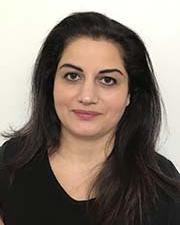Turkish
Why Study Turkish?
Who speaks Turkish?

Turkish is a Turkic language spoken by over 80 million people all around the world, which makes it one of the most widely spoken languages of the globe. It is the official language of the Turkish Republic and is also spoken in Cyprus by Turkish Cypriots. Turkish speakers can also be found in the Balkans, primarily in Greece, Bulgaria, and the former Yugoslav countries. There are also over 4 million Turkish immigrants in Western Europe, mostly in Germany, where Turkish is the second most widely spoken language.
Because Turkish is considered a critical foreign language by the U.S. Department of State, Turkish language speakers are in high demand for work in both government and non-profit sector.
What is the Turkish language like?

Turkish, along with the other Turkic languages (e.g., Azeri, Kyrgyz, Kazakh, Tatar, Uzbek, etc.), belongs to the Altaic language family. Other languages that belong to the Altaic language family are the Mongolian and Tungusic languages. Many linguists also classify Japanese and Korean as Altaic languages. This group of languages is named after the Altai mountains, a famous mountain range in Central Asia.
One of the most interesting properties of Turkish is its morphology (i.e., the structure of its words). Turkish is an agglutinative language and all of the derivational and inflectional morphemes are suffixes, meaning that new particles are always added to the end of a base form to generate new words. Thus, one can easily observe slight systematic changes in meaning and quickly learn new words.
Another interesting feature of the Turkish is that the objects usually precede verbs. So the sentence “Hakan ate an apple” would have the following word order in Turkish: “Hakan an apple ate.” Although you may find this strange at first, you’ll be amazed by how quickly this new word order comes to feel natural to you when you’re learning Turkish.
There are many great things about learning Turkish. First, the language has neither grammatical gender nor articles, which means that there is no such thing as memorizing the gender class (masculine, feminine, neuter, etc.) of nouns. Plus, there are no irregular verbs in Turkish, so conjugating verbs is really easy. Crucially, Turkish is the only Middle Eastern language that uses the Latin script! Moreover, Turkish writing matches the pronunciation very closely, so the words are pronounced as they are written.
Because Turkic languages are all closely related, Turkish is mutually understandable with many of them. Thus, knowing Turkish will make it easier to learn other modern Turkic languages, like Azeri, Turkmen, Kyrgyz, Kazakh, Tatar, Uzbek, and Uighur. Many of these Turkic languages are spoken in regions that are strategically of high importance, like the former Soviet Union and China.
Where is Turkey and what is its history like?
Turkey is situated at the junction of Europe and Asia. Because of its geographic location in both Europe and Asia, Turkey has commonly been referred to as a bridge that unites the West and the East. The European and Asian sides are divided by the “Istanbul Boğazı” (Bosphorus), the sea of Marmara, and “Çanakkale Boğazı” (the Dardanelles). Besides Turkey’s magnificent landscape its fascinating history has also made a lasting impression on modern civilization. Turkey’s rich history ranges from the earliest human civilizations, over the Hellenistic Empire, the Roman Empire, the Byzantine Empire, the Ottoman Empire, to the modern secular republic that it is today. Thus, Turkey and Turkish are of great interest to students of archaeology and history. Emerging as an economic and regional power, Turkey has strong geographical, historical, and political ties with European, Central Asian, and Middle Eastern countries. In Turkey one could definitely experience and enjoy an incredible diversity in nature, culture, history, beliefs and ideas.
What is the political structure of Turkey?
Political structure in Turkey is based on a secular democratic, pluralist and parliamentary system in which human rights are protected by law and justice. Turkey is a key member state of NATO (with the 2nd largest army of NATO after the US) and an important ally to the US. It is also a member of the Council of Europe and a candidate for full membership to the European Union.
What is Turkish Cuisine like?
Turkish cuisine is widely considered as one of the most exciting in the world and it is getting more and more popular across the US. Much of Turkish cuisine is heavily influenced by its geographic location. Turks eat a lot of seafood since the Turkish Peninsula is surrounded by 4 seas: the Mediterranean, Aegean, Marmara, and Black Seas. Turkish cuisine also includes a lot of meat, rice, bulgur, fresh vegetables and fruits. The Aegean and Mediterranean regions of Turkey are well-known for their olive trees and olive oil production, so many Turkish dishes include olive oil and olive oil consumption in the country is high. Turks are also known for their love for yogurt. In fact, the word yogurt was borrowed into English from Turkish, the Turkish word being yoğurt. And of course, Turks love their tea and their coffee is world famous.
Scholarship Opportunities
Because Turkish is considered a critical foreign language by the U.S. Department of State, students learning Turkish may also apply to the CLS Program, which offers fully-funded summer language institutes. For more information, visit the CLS Scholarship website.
Students learning Turkish may also apply to the Boren Awards, which provide up to $20,000 to U.S. undergraduate students to study abroad. For more information, visit the Boren Awards website.
Every summer, the American Research Institute in Turkey offers approximately 15 fellowships for advanced students for participation in the summer program in intensive advanced Turkish language at Boğaziçi University in Istanbul. The fellowships cover round-trip airfare to Istanbul, application and tuition fees, and a maintenance stipend. For more information, visit the UPenn site.
